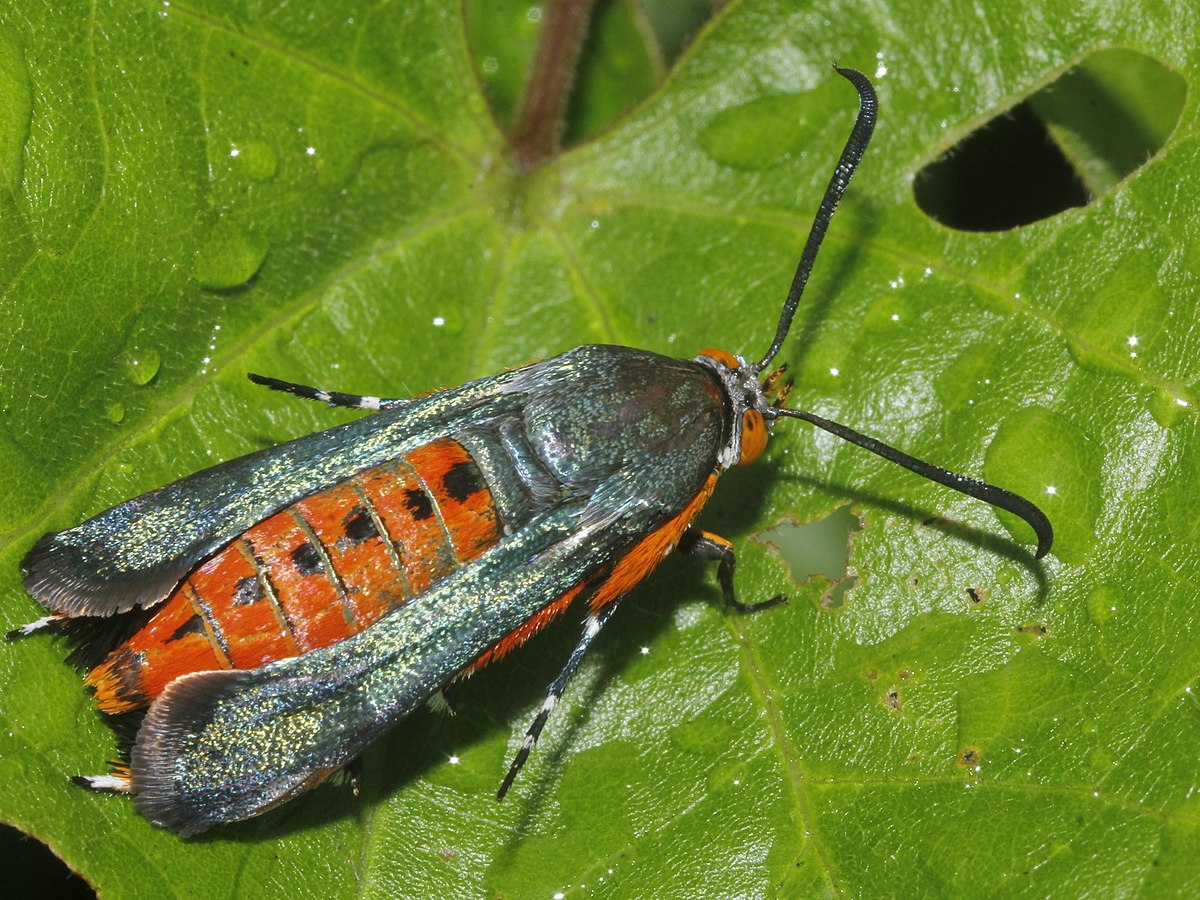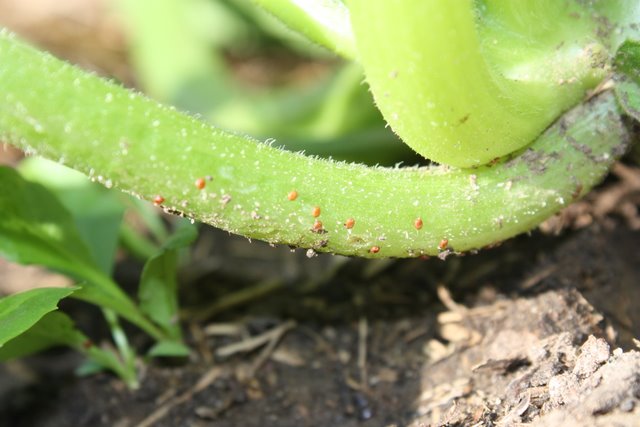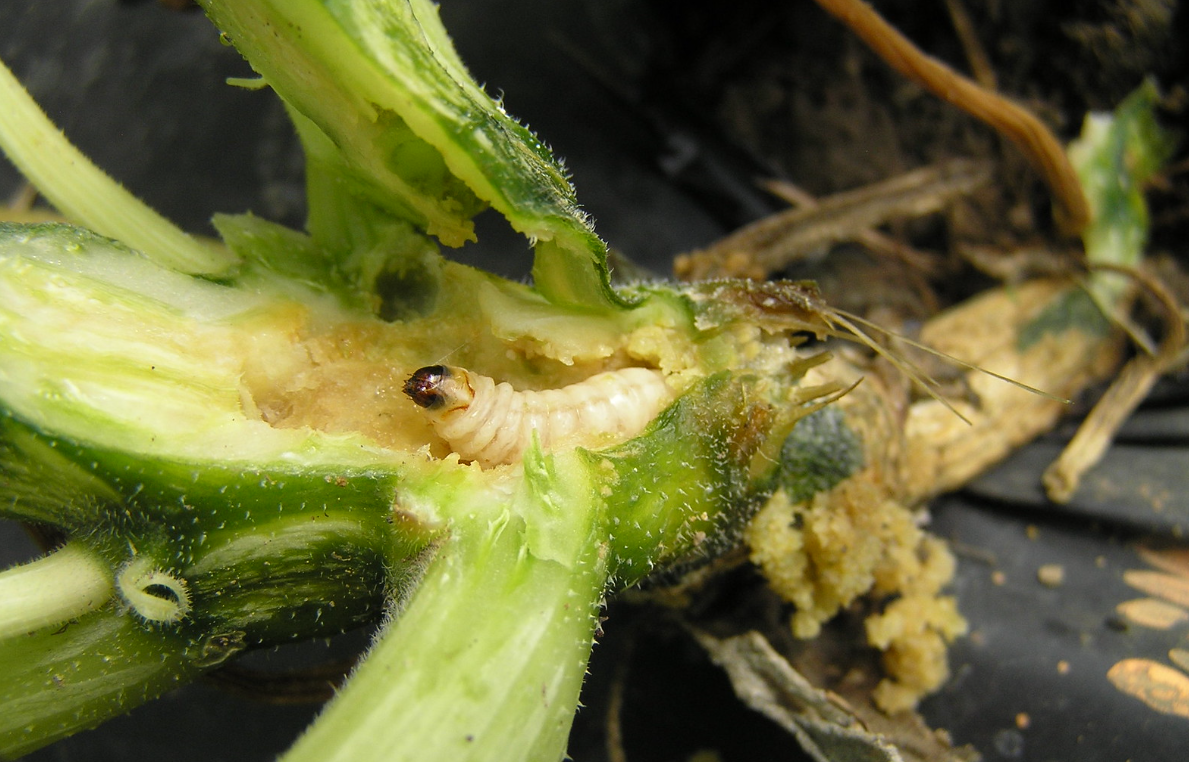Squash Vine Borers
Identification and Life Cycle:
- Adult: Squash vine borers are clear-winged moths that resemble wasps. They have an orange-red body with black dots and a wingspan of about 1 inch. Adults are active during the day.

- Eggs: Adults lay small, flat, reddish-brown eggs singly or in small groups on the stems and at the base of host plants.
- Laying Sites: Eggs are typically laid near the base of the plant.
Hatching Time: Eggs hatch in 7-10 days.

Larva: Upon hatching, larvae bore into the stem of the plant, where they feed for 4-6 weeks. Larvae are white with a brown head, growing up to about 1 inch in length.

Attack on Plants:
- Entry Point: Larvae bore into the stem at or near the soil line.
- Damage: As they tunnel and feed inside the stem, they disrupt water and nutrient flow, causing wilting and often plant death. Infested plants show sudden wilting and frass (sawdust-like excrement) near the entry hole.
Commonly Attacked Plants:
- Summer squash (e.g., zucchini)
- Winter squash (e.g., butternut, acorn)
- Pumpkins
- Gourds
Prevention and Treatment:
- Prevention:
- Timing: Plant early or late in the season to avoid peak borer activity.
- Row Covers: Use floating row covers to protect plants until they start flowering, ensuring that the covers are sealed to prevent moth entry.
- Crop Rotation: Rotate crops annually to disrupt the borer life cycle.
- Companion Planting: Plant borer-resistant varieties or interplant with other crops to confuse adult moths.
- Physical Barriers: Wrap the base of stems with aluminum foil or other protective materials to deter egg-laying.
- Trap Crops: Use a few plants specifically to attract and trap adult borers.
- Monitoring and Early Detection:
- Inspection: Regularly inspect the base of plants for eggs and larvae entry holes.
- Yellow Traps: Use yellow sticky traps to monitor for adult moths.
- Treatment:
- Manual Removal: Once detected, carefully slit the stem lengthwise and remove larvae. Bury the damaged stem section with soil to encourage new root growth.
- Beneficial Nematodes: Apply beneficial nematodes around the base of the plants to target larvae in the soil.
- Insecticides: Apply targeted insecticides such as Bacillus thuringiensis (Bt) or spinosad around the base of the plant at the first sign of adult activity or egg-laying.
By understanding the life cycle of squash vine borers and implementing preventive measures, gardeners can effectively manage and reduce infestations, ensuring healthy and productive squash plants.
